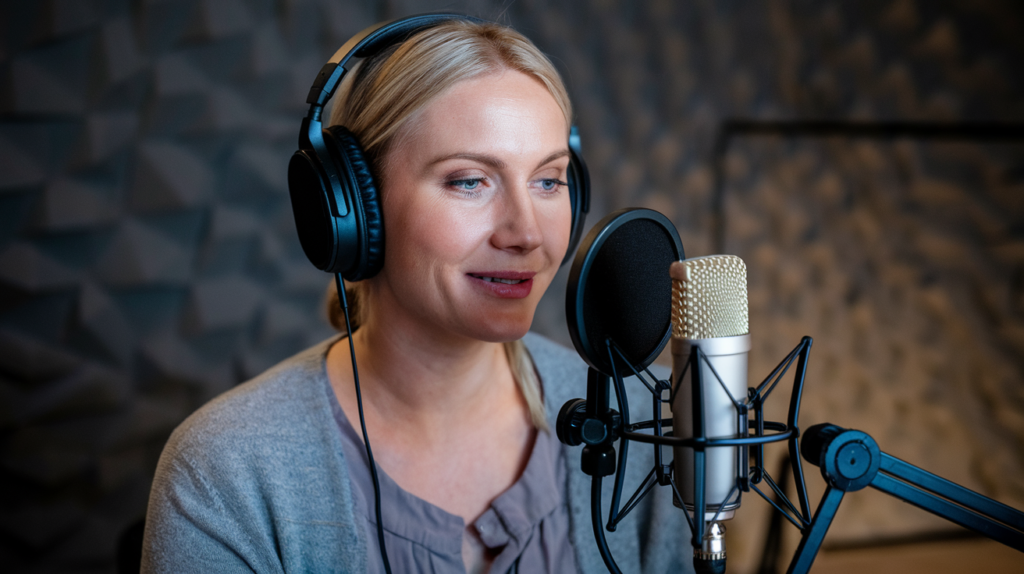Key Takeaways
- Dialect Nuances Matter: The differences in pronunciation, vocabulary, and emotional delivery between Australian and American English can significantly impact the effectiveness of voiceovers.
- Audience Connection: Selecting the right dialect based on your target demographic enhances viewer engagement by creating relatable content tailored to cultural expectations.
- Pronunciation Variations: Understanding how vowel sounds and stress patterns differ between dialects is essential for ensuring listener comprehension and authenticity.
- Cultural Considerations: Adapting voiceovers to reflect local slang and customs improves resonance with audiences, making content feel more familiar and engaging.
- Challenges in Selection: Recognizing accents’ influence on audience perception helps you choose voice talent that aligns with your project’s objectives—whether casual or professional.
Ever wondered why some voiceovers just hit differently depending on whether they’re in Australian or American English? The nuances between these two dialects can make or break your project. From pronunciation to slang, understanding these differences is crucial for creating authentic and relatable content.
In a world where global audiences are more connected than ever, the right voiceover can elevate your message. But how do you choose the perfect style for your audience? By diving into the unique characteristics of Australian and American English, you’ll discover how to tailor your approach for maximum impact. Whether you’re crafting an ad, a documentary, or an animated series, knowing these distinctions will help you connect better with viewers and enhance their experience.
Overview of Voiceovers in Different English Dialects
Voiceovers play a crucial role in conveying messages across cultures, and the differences between Australian and American English can significantly influence your project’s impact. Each dialect brings unique characteristics that affect pronunciation, pacing, and even emotional delivery. Understanding these nuances helps you choose the right voiceover talent for your needs.
Australian English often features distinct vowel sounds and slang terms that may not be familiar to an American audience. For instance, phrases like “fair dinkum” or “arvo” resonate well with Australians but might confuse others. This makes it essential to select a voice artist who naturally embodies these elements, ensuring authenticity and relatability.
American English tends to be more direct and straightforward, favoring clarity over regional idioms. A voice actor from this background can bring a polished sound that’s widely understood globally. Their familiarity with various accents—such as Southern or Midwestern—also allows for greater versatility when catering to diverse audiences.
When considering voiceovers for advertisements or educational content, think about how these dialects align with your target demographic. The right choice can enhance viewer engagement by creating an immediate connection through relatable language and cultural references.
Whether you opt for an Australian or American voiceover artist depends on your project’s objectives and audience expectations. By recognizing the strengths of each dialect, you’ll better position yourself to create compelling content that resonates effectively with listeners around the world.
Key Differences Between Australian and American English
Understanding the key differences between Australian and American English is essential for selecting the right voiceover talent. These distinctions can affect how your message resonates with audiences.
Pronunciation Variations
Pronunciation varies significantly between these two dialects. In Australian English, vowels tend to have a broader sound. For example, the “i” in “fish” often sounds more like “ee,” making it sound distinct to an American ear. Additionally, certain words may receive different stress patterns, affecting overall clarity. When choosing a voice artist for your project, consider how pronunciation impacts listener comprehension.
Vocabulary Discrepancies
Vocabulary also differs between these dialects, influencing how messages are received. Australians might use terms like “biscuit” instead of “cookie” or “boot” in reference to a car trunk rather than “trunk.” Such vocabulary choices can enhance authenticity but may confuse viewers unfamiliar with Australian slang. Selecting a voice actor who understands these nuances ensures that your content aligns well with its intended audience while maintaining clarity and relatability.
Cultural Influences on Voiceovers
Cultural influences play a vital role in shaping voiceovers. Understanding these nuances can enhance the effectiveness of your project and resonate with your audience.
Media and Entertainment Context
In media and entertainment, the context significantly influences how voiceovers are perceived. Australian English often brings a laid-back, conversational tone that connects well with local audiences. For instance, when a voice artist uses regional slang or idiomatic expressions, it creates familiarity that engages listeners. In contrast, American English tends to favor clarity and precision. Voice actors typically deliver content in a straightforward manner, making it accessible to a broader audience. Choosing the right dialect based on the project’s nature—whether it’s an advertisement or documentary—can make all the difference in viewer engagement.
Localized Content Adaptations
Localized content adaptations ensure that your message aligns with cultural expectations. Adapting voiceovers involves not only changing accents but also modifying language usage to reflect local customs and values. For example, using “biscuit” instead of “cookie” can lend authenticity to projects aimed at Australian viewers while maintaining relatability for American audiences through familiar phrases like “takeaway.” Tailoring your voice over talent selection reflects an understanding of these subtleties. By choosing a voice actor who embodies the target culture’s characteristics, you create content that resonates deeply with specific demographics.
Emphasizing cultural influences in voiceovers cultivates stronger connections between creators and audiences. This approach ultimately enhances the overall viewing experience by ensuring messages are communicated effectively across different cultures.
Challenges in Voiceover Work
Voiceover work involves navigating various challenges, especially when dealing with different English dialects. Understanding these obstacles can enhance your project’s effectiveness and connection with audiences.
Accents and Regional Dialects
Accents play a crucial role in voiceovers. Australian English features unique vowel sounds and intonation patterns that differ from American English. For instance, the pronunciation of words like “dance” or “dance” can change how your message is received. A voice artist familiar with these nuances can deliver a performance that feels authentic and relatable to the target audience. Selecting the right voice actor who embodies the appropriate accent ensures clarity and emotional resonance, giving life to your project while avoiding potential confusion.
Audience Perception and Acceptance
Audience perception significantly influences how voiceovers are received. Listeners often associate certain accents with specific qualities; for example, Australian voices might convey a casual vibe, while American voices may evoke professionalism or directness. If your content targets an international audience, consider how each dialect aligns with viewer expectations. Will an Australian tone add charm to an advertisement aimed at locals? Or does a polished American delivery better suit a global campaign? Tailoring your choice of voice talent based on these perceptions enhances engagement and strengthens connections with diverse viewers.
By recognizing these challenges within voiceover work, you position yourself to make informed decisions that resonate deeply with your audiences.
Conclusion
Navigating the nuances of Australian and American English in voiceovers is essential for engaging your audience effectively. By understanding pronunciation slang and cultural influences you can make informed choices that resonate with listeners. Selecting the right voice artist who embodies these dialects enhances authenticity and emotional connection.
Remember that each project has unique objectives and target demographics. Aligning your voiceover choice with these factors not only improves comprehension but also strengthens viewer engagement. Whether you’re creating content for ads or documentaries being mindful of these differences will elevate your final product. Embrace the diversity of English dialects to craft compelling voiceovers that leave a lasting impact on audiences around the world.
Frequently Asked Questions
What are the main differences between Australian and American English in voiceovers?
The primary differences include pronunciation, slang, and emotional delivery. Australian English features broader vowel sounds and unique expressions that may confuse American audiences. In contrast, American English is known for its clarity and directness, making it more widely understood.
Why is understanding dialect important for voiceover projects?
Understanding dialect helps creators choose the right voice artists to convey messages authentically. It ensures that content resonates with target audiences by matching cultural nuances and expectations, enhancing overall viewer engagement.
How do pronunciation differences affect listener comprehension?
Pronunciation differences can lead to misunderstandings or confusion. For example, Australian English has distinct stress patterns and vowel sounds that may not be familiar to American listeners, impacting how effectively a message is communicated.
What role does slang play in voiceover effectiveness?
Slang adds authenticity but can also create barriers if the audience isn’t familiar with it. Using appropriate slang enhances connection with local viewers while potentially confusing those from different regions.
How should I choose between an Australian or American voice artist?
Your choice should align with your project’s objectives and target demographics. Consider factors like cultural relevance, audience familiarity with dialects, and the emotional tone you want to convey in your content.
Can cultural influences impact how voiceovers are perceived?
Yes, cultural influences shape how messages are received. For instance, Australian English often conveys a relaxed tone which resonates locally, while American English emphasizes clarity that appeals broadly across various cultures.
What challenges arise when working with different English dialects in voiceovers?
Challenges include selecting the right accents for clarity and emotional resonance as well as ensuring that regional variations do not confuse listeners. Understanding these elements is crucial for effective communication across diverse audiences.







